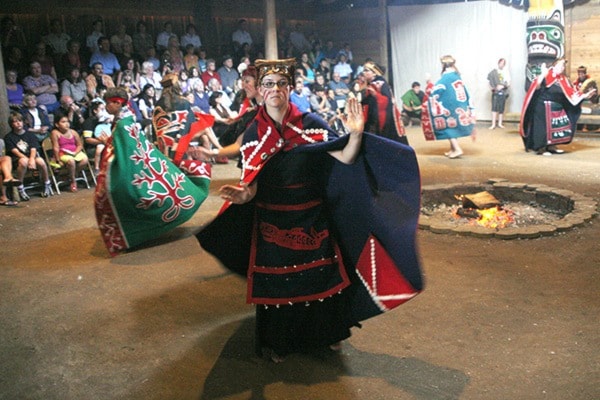It began officially 20 years ago, but for some, one day of celebration is not nearly enough.
Thanks to then-Governor General of Canada Roméo LeBlanc, the proclamation declaring June 21 of each year as National Aboriginal Day was created in 1996 - the result of consultations and support for such a day made by various indigenous groups across Canada.
The day was created for all Canadians to recognize and celebrate the unique heritage, diverse cultures and contributions of First Nations, Inuit and Métis peoples.
“I think it’s an important positive step forward; it’s a day for the aboriginal community to highlight the strengths and history in this country,” says Rachel Blaney, NDP MP for North Island-Powell River. “It’s a symbolic day which creates a conversation and highlights continued action.”
One day is good - but it can’t end there.”
According to Indigenous and Northern Affairs Canada, June 21 was chosen as many indigenous peoples and communities have celebrated their culture and heritage on or near this day due to the significance of the summer solstice as the longest day of the year.
In 1982, the National Indian Brotherhood (now the Assembly of First Nations) called for the creation of National Aboriginal Solidarity Day. In 1995, The Royal Commission on Aboriginal Peoples recommended the designation of a National First Peoples Day.
Also in 1995, the Sacred Assembly - a national conference of indigenous and non-indigenous people chaired by Elijah Harper - called for a national holiday to celebrate the contributions of indigenous peoples.
Blaney explains the day is a catalyst to recognize and understand the history of Aboriginal Peoples, especially with the release of last year’s Truth and Reconciliation Commission of Canada’s Report and Calls to Action.
“Knowing the history doesn’t associate blame, but associates reality. People who don’t know the history don’t carry the knowledge forward.”
While Blaney doesn’t associate herself as biologically First Nations, she was adopted by a First Nations family, and grew up for some time thinking she was.
“It never occurred to me that I had come from anywhere else. They were my family,” she told The Record shortly after she was elected.
Blaney grew up in Terrace; her adoptive family was part of the Stellat’en First Nation. She said when she filed her nomination papers she was faced with a dilemma.
Because of her upbringing, she could have identified herself as First Nation. She chose not to, out of respect for those who are biologically so.
“That was a really hard one for me and in fact some members of my family were hurt that I did not (identify as First Nation),” she said. “After all, they are my family, the only family I have ever known.”
While campaigning, Blaney explains how much the issue of recognizing and celebrating First Nations culture was a priority for many of her constituents, and was told how many people in her riding wanted to get together and create a positive future with the various First Nations on the North Island.
“I talked to a lot of the community and it was evident that so many people knew of the strengths of building the (First Nations) economy, culture and language.”
Gracie MacDonald says she does see a change. A shift in perspective.
“More pride,” she notes. “I see the aboriginal kids are a lot more proud of who they are. We have an aboriginal student club, and other kids want to join. People want to bring their friends, and the barrier breaks down.”
MacDonald is the vice-principal at Huband Park Elementary School. On Wednesday, Huband hosted its very first day of local aboriginal learning, specifically around the question: ‘How can we honour First Nations traditions in today’s world?’
While the day didn’t fall directly on National Aboriginal Day, it was planned in conjunction with the day, and it’s been something she, along with staff and the school district’s Aboriginal Education department, have been thinking about for a number of years.
Having the day, MacDonald says, is not about providing content for students, but to provide a larger world view and perspective.
“I didn’t want to have an activity just around making bannock. I want the kids to understand what’s important about bannock.”
MacDonald explains aboriginal education is now woven through all content in the school curriculum - a shift in the right direction, she adds.
“It’s important for all kids to experience it. People have to learn to walk in someone else’s shoes. How else do we get to a place of reconciliation and understanding?”
• • •
From 2 to 8 p.m. on June 21, the K’ómoks First Nation at 3320 Comox Road is hosting events to celebrate National Aboriginal Day, including performances from the Kumugwe Dancers, traditional workshops and storytelling, games and foods. For more information, visit their Facebook page, or kumugwe.ca.
